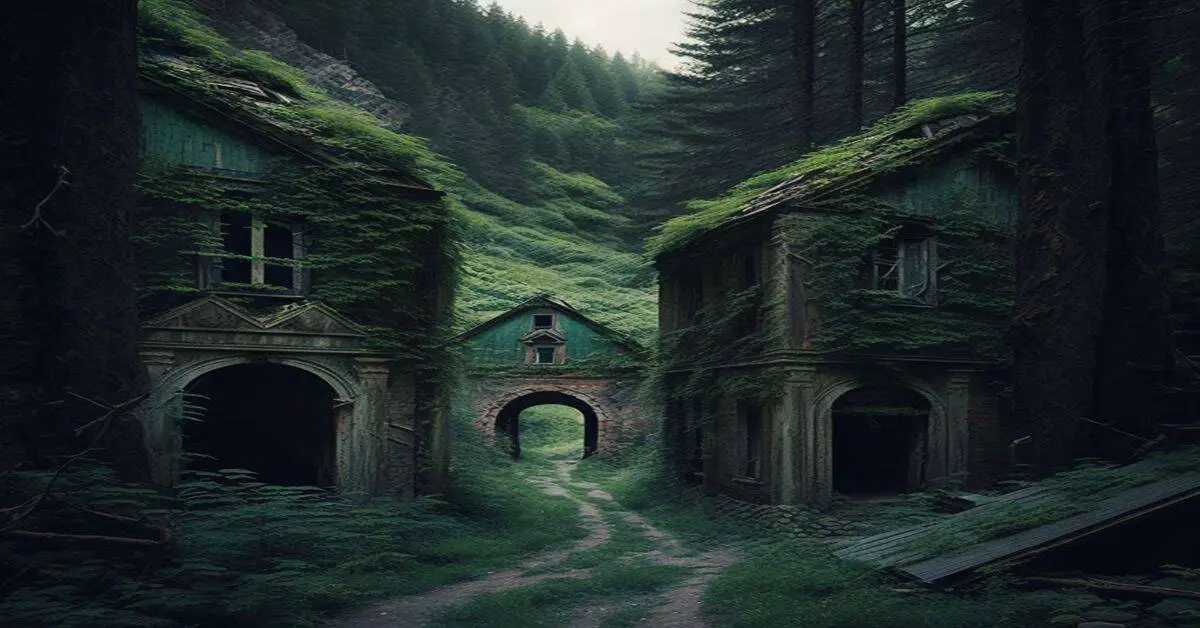Agate, Colorado, is a true ghost town with a fascinating history and current state. It lies just off Interstate 70 at exit 340 and starkly contrasts the new homes being built nearby.
The town was founded in 1876 under the name Gebhard and changed its name to Agate in 1882. Today, most of the old town lies abandoned, with deserted homes and businesses.
Like a time capsule, Agate provides a glimpse into the past and allows us to reflect on the changing times. It is a reminder of the fragility of human existence and how quickly things can change.
The town’s history is a testament to the resilience of the human spirit, as its residents faced many challenges, including droughts, fires, and economic hardships. Despite these challenges, the town survived for over a century, and its history is a testament to the strength and perseverance of the people who once called it home.
In this article, we will explore the location and history of Agate, its population and current state, and provide photos that showcase its unique beauty and haunting history.
Key Takeaways
- Agate, Colorado is a ghost town that was founded in 1876 as Gebhard, changed name to Agate in 1882, and most of the town is abandoned.
- The town’s history is rooted in ranching and farming, and it provides a glimpse into the past, but also serves as a reminder of the fragility of human existence and how quickly things can change.
- Agate has the potential for restoration, with buildings and streets that could be restored or repurposed for new businesses, and new homes being built nearby that could attract new residents.
- Photographs of Agate showcase the remnants of the town’s past, highlight the eerie and desolate atmosphere, and provide a glimpse into the lives of former residents and businesses.
Location and History
Nestled just off Interstate 70 at exit 340 lies the semi-ghost town of Agate, once known as Gebhard in 1876, now a Colorado ghost town with a population of 364 people in the zip code 80101 as of 2000.
The town changed its name to Agate in 1882, and its history is rooted in ranching and farming.
Today, most buildings in the old town are abandoned, leaving behind a desolate scene.
However, exploration opportunities abound for those interested in history and urban exploration.
Notable landmarks in Agate include an old gas station and mechanic shop, a corner grocery store, and several deserted houses.
These structures offer a glimpse into this small town’s past and former way of life.
Visitors can walk through the empty streets and imagine the hustle and bustle of a once-thriving community.
Despite its current state of disarray, Agate remains a fascinating destination for those seeking to explore the history of Colorado’s ghost towns.
Population and Current State
As recorded in 2000, the town’s population is 364 people in the zip code 80101, with most buildings and homes being abandoned, leaving the old town almost empty. The town’s current state starkly contrasts its past, where it was once a bustling community.
However, the deserted houses and businesses in Agate give a glimpse into the effects of abandonment on a small town.
Exploring the abandoned buildings and streets of Agate can evoke a sense of desolation, but it also presents an opportunity for potential revitalization.
The old gas station, mechanic shop, corner grocery, and home could be restored to their former glory or repurposed for new businesses.
New homes are being built nearby, which could attract new residents to the area. With careful planning and investment, Agate has the potential to once again become a thriving community.
Photos of Agate
Capturing the essence of a forgotten era, the photos depict a hauntingly beautiful landscape of abandoned structures and deserted streets in a once-thriving community. The images showcase the remnants of Agate’s past, where buildings and homes once stood tall, now left to decay and crumble.
The photographs highlight the town’s eerie and desolate atmosphere, leaving a lasting impression on those who view them. Exploring Agate’s forgotten past through these photographs allows us to witness the town’s decline and reflect on the reasons behind its abandonment.
The images provide a glimpse into the lives of the people who once called Agate home and the businesses that once thrived in the area. While the town may now be a ghost of its former self, these photographs preserve its history and remind of the impact time can have on a community.
Frequently Asked Questions
What events or activities are held in Agate throughout the year?
No information is available about annual festivals or local sports teams in Agate.
How does Agate’s history compare to other ghost towns in Colorado?
How does Agate’s history compare to other Colorado ghost towns? Agate, founded in 1876 during the mining boom, has seen few preservation efforts. Many buildings are abandoned, in contrast to other ghost towns that have been preserved as tourist attractions.
Are there any plans to restore any of the abandoned buildings in Agate?
Preservation efforts in Agate face challenges such as lack of funding and ownership disputes. Local organizations and residents are working to keep the town’s history alive through events and tours. Visitors can participate in preservation efforts through volunteering and donations.
What kind of wildlife or natural scenery can be found in the surrounding area of Agate?
The area surrounding Agate offers diverse wildlife sightings, including prairie dogs, antelopes, and various bird species. Scenic hikes are available at nearby Limon Heritage Museum & Railroad Park and Paint Mines Interpretive Park.
Have any famous or notable individuals ever visited or lived in Agate?
There is no record of famous visitors or notable residents in Agate, Colorado. However, the town has a rich history with tales of pioneers, railroads, and early settlements that add to its historic significance.


